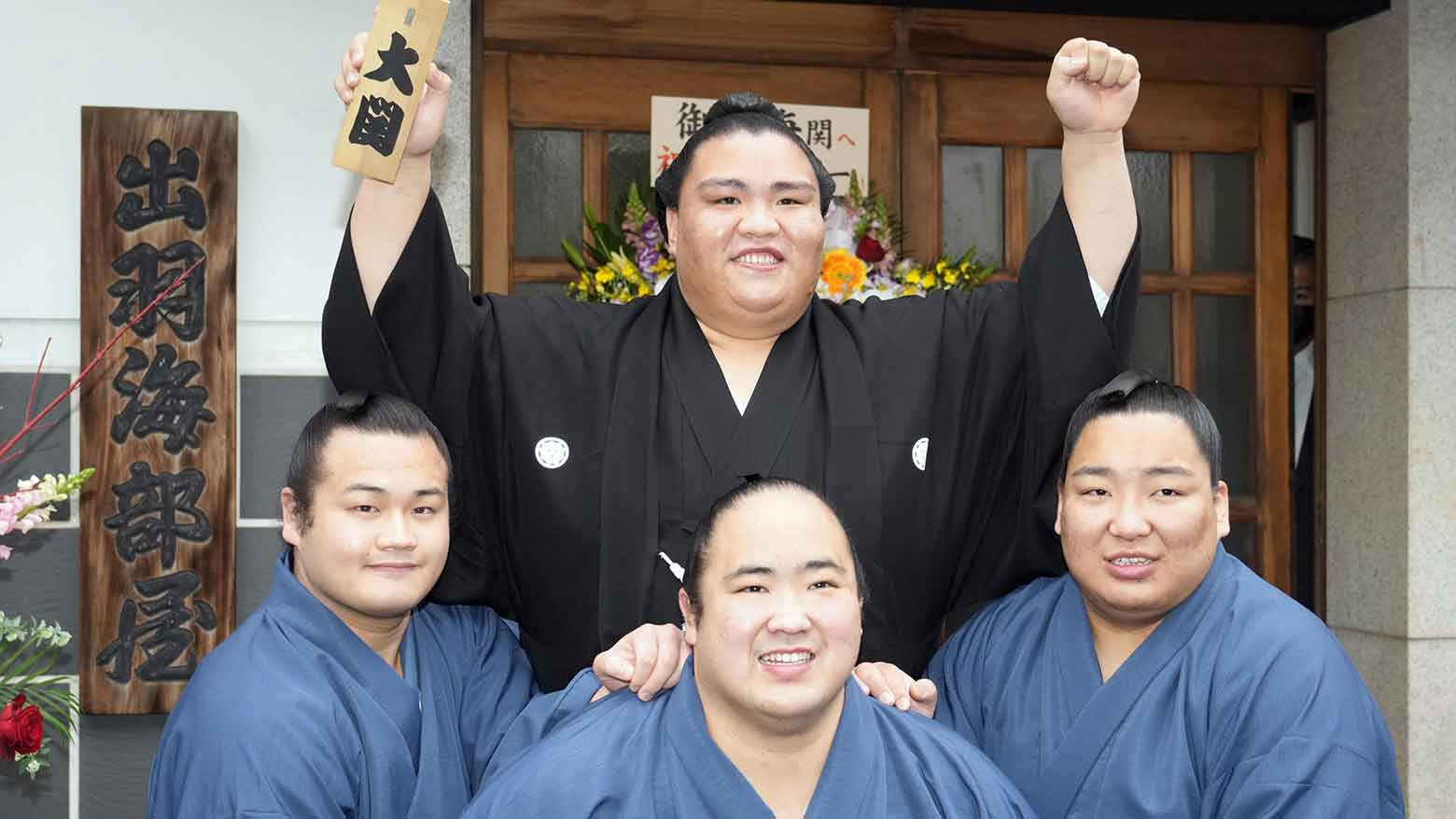All eyes on the sole Yokozuna
Before the tournament, a lot of attention was focused on yokozuna grand champion Terunofuji. The Mongolian-born yokozuna showed overwhelming strength last year by winning four out of six tournaments to become the leading figure in sumo. 30-year-old Terunofuji entered the competition having won two consecutive titles since making yokozuna in September. This time he was aiming to engrave his name in sumo history by winning three consecutive titles right after becoming yokozuna… a feat which has not been accomplished for more than a century. The only other grand champions to capture three titles in a row since debuting at the top rank were Tachiyama in 1912 and Tochigiyama in 1919.
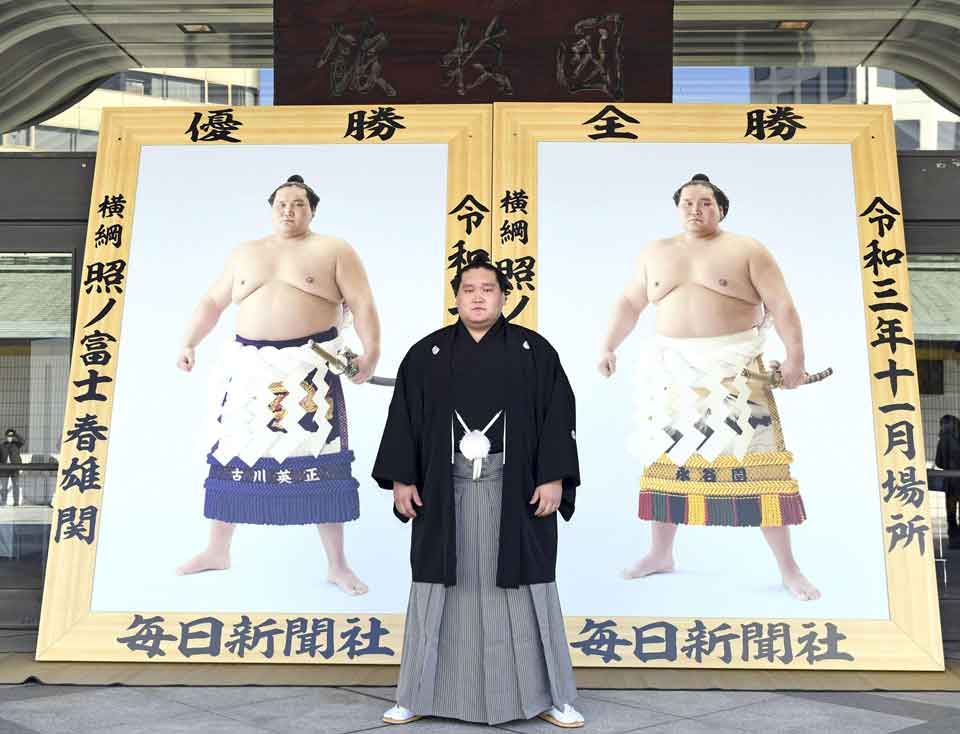
A major upset at the top level
Terunofuji was the top contender this time, but other wrestlers stepped up to challenge him. The man leading the charge was Mitakeumi. By the end of the first week of the two-week contest, Mitakeumi was the only combatant with a perfect 8 and 0 record. Terunofuji was still in Mitakeumi’s rear-view mirror with just one loss, followed by six other wrestlers with 2 losses each.
Mitakeumi suffered his first setback with a loss on Day 10 which placed him and Terunofuji as the co-leaders, with five days to go. When the two leaders both lost on Day 12, it created a three-way tie for first place as maegashira rank-and-filer Abi also remained at two losses. With just three days left, it was clear to everyone that the championship was going to be claimed by one of these three wrestlers.
On Day 13, Mitakeumi faced off against Abi and defeated the up-and-comer with little trouble. And then, on Day 14, it was Abi knocking off Terunofuji for a huge upset.
So, heading into the final day, Mitakeumi had sole possession of the lead with 12 wins and 2 losses. He was being trailed by three men with 11 wins and 3 losses each: Terunofuji, Abi and another rank-and-filer, Kotonowaka. First, Abi and Kotonowaka faced each other. Abi won the match and eliminated Kotonowaka from the title race.
Now, the showdown: Mitakeumi versus Terunofuji. If Mitakeumi were to beat Terunofuji, Mitakeumi would clinch the championship. But if Mitakeumi were to lose to Terunofuji it would create a three-way playoff with Terunofuji, Mitakeumi and Abi. The match began with Terunofuji trying to gain an early advantage by establishing an inside position on Mitakeumi but the yokozuna’s strategy was completely blocked by Mitakeumi’s solid defense. Mitakeumi then seized a double inside grip on Terunofuji and drove the yokozuna out of the ring to take the match. The victory gave Mitakeumi the tournament championship with 13 wins and 2 losses. It was his first title since the 2019 September tournament and his third overall. We saw Mitakeumi get emotional during the victory ceremony. I’m sure his tears of happiness will wash away all the frustrations he has endured over the past few years.
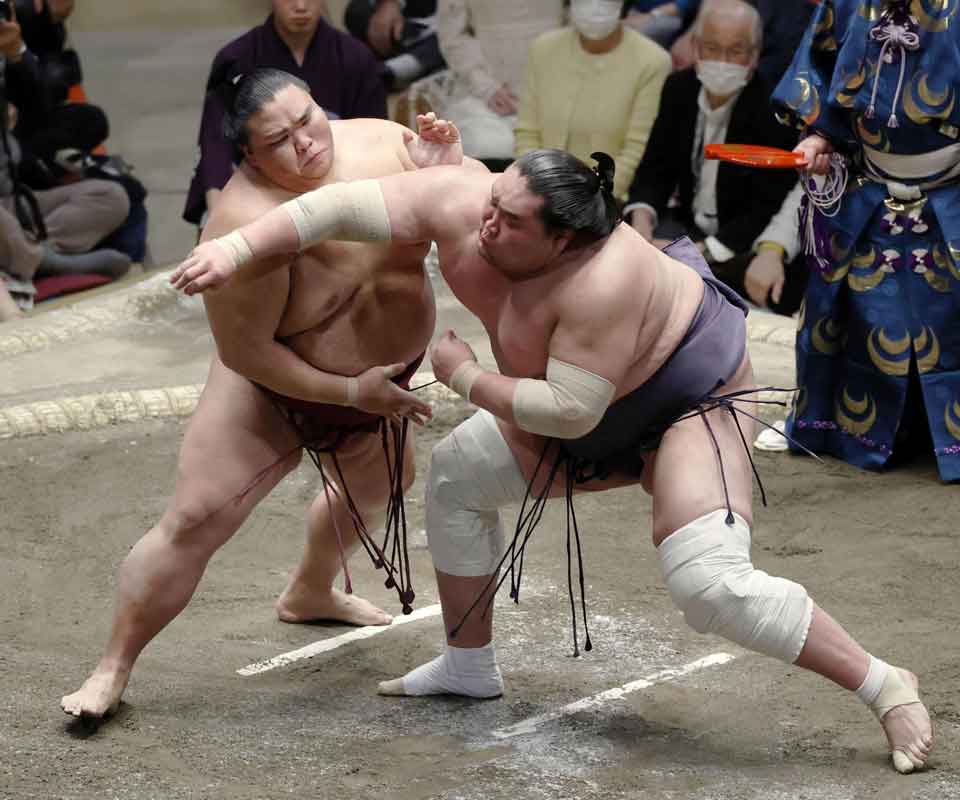
Earning coveted promotion to ozeki
With his New Year Tournament triumph, Mitakeumi amassed a total of 33 wins in three recent tournaments which is a benchmark to make ozeki, the second-highest rank. Three days after the tournament’s completion on Wednesday, the Japan Sumo Association officially promoted Mitakeumi to the well-respected rank. It was a dream-come-true moment for 29-year-old Mitakeumi, who had spent a total of 18 tournaments at the third-highest rank of sekiwake.
Mitakeumi’s promotion to ozeki is significant. He’s become only the second man from Nagano prefecture in central Japan to rise to ozeki. The last Nagano native to earn the promotion was Raiden in 1795, a full 227 years ago.
Upon receiving the promotion, Mitakeumi said that he’ll try his best not to disgrace the rank of ozeki. He also said that he will always be grateful and will keep working hard by further improving his strength.
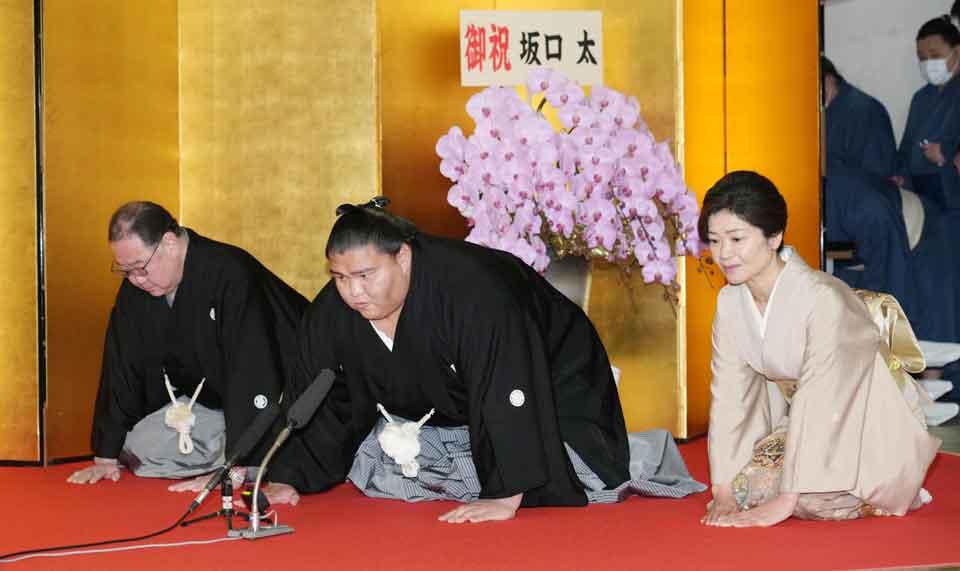
Personally, I have been an advocate of Mitakeumi since his pro debut. I’ve interviewed him and spoken to him a number of times and each time he impressed me with his poise and self-confidence. A lot of people have criticized Mitakeumi in the past for his lack of determination to make ozeki. But Mitakeumi always told me that he firmly believes in his own approach, and he has never wavered. His promotion validates him, and he has now silenced all the critics. Way to go Miakeumi! Job well done.
Special prize winners
Mitakeumi not only took home the Emperor’s Cup but he also picked up the Technique Prize for displaying superb techniques throughout the tournament.
The runner-up finisher Abi received the Outstanding Performance Award for upsetting yokozuna Terunofuji and contending for the championship until the last moment.
Kotonowaka also went home with a special award. He was given the Fighting Spirit Prize for making his presence felt by racking up 11 wins.
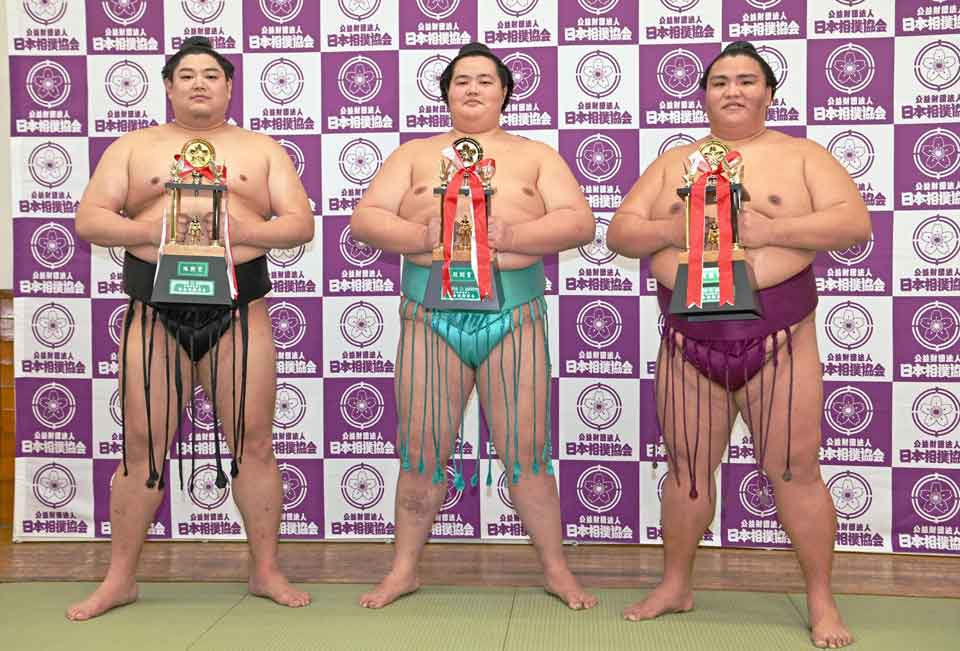
Looking ahead
Now that the New Year Tournament is in the books, let’s shift our focus to the next tournament; the spring tourney which takes place in March.
The upper echelons will be made up of yokozuna grand champion Terunofuji along with three ozeki champions; Shodai, Takakeisho and Mitakeumi.
Among the four horsemen, the newly promoted ozeki Mitakeumi will likely be leading the charge. He’ll be gunning for his second consecutive, and fourth overall, championship. Furthermore, he’ll be aiming to become the first wrestler since Hakuho in the 2006 May tournament to win the championship in his ozeki debut. Needless to say, Mitakeumi can’t sit on his laurels but must train harder and improve his strength and technique, because his lower-ranked foes will be much more eager and motivated to take down ozeki Mitakeumi moving forward.
Will the top dog Terunofuji redeem himself to bring the Emperor’s Cup back to his living room? For him to do so, he must get himself back in top form. It was evident from about half-way through the New Year Tournament that he was out of shape. He was fighting with limited mobility as he was dealing with pain in his knees. If he wants to overwhelm his foes again he has to take care of his body and enter the spring tourney in tip-top shape.
The two ozeki Shodai and Takakeisho underperformed this time. Shodai ended the contest with a dismal 6 and 9 record. Finishing with a losing record is nothing but a disgrace if you’re an ozeki. Takakeisho also came up way short of expectations, taking himself out of the tournament on Day 4 citing an ankle injury. As a result, both will enter the spring contest as kadoban ozeki --- which means that if they fail to score a majority of 8 wins they will no longer remain at ozeki and will be demoted to a lower rank. We’ll see how Shodai and Takakeisho deal with their predicament in March.
Finally, I want you to keep your eye on Abi. Since his repromotion to the top division in November, he’s now scored back-to-back 12 and 3 records. The only reason Abi was competing in the lower divisions the past year was because of his violation of COVID-19 protocols set by the sumo association. After serving three tournament suspensions, he’s proved his mental maturity and physical prowess and has been nothing short of spectacular. There’s no doubt in my mind Abi has what it takes to win a tournament and become one of the leading figures in sumo in the near future. People often refer to the spring tournament as the “areru haru basho” which literally means the “stormy spring tournament.” Don’t be surprised to see Abi creating a big storm and coming out on top when all is said and done in March.
The Spring Tournament will get underway on March 13 in Osaka, western Japan.
